Name Hans Scharoun Role Architect | ||
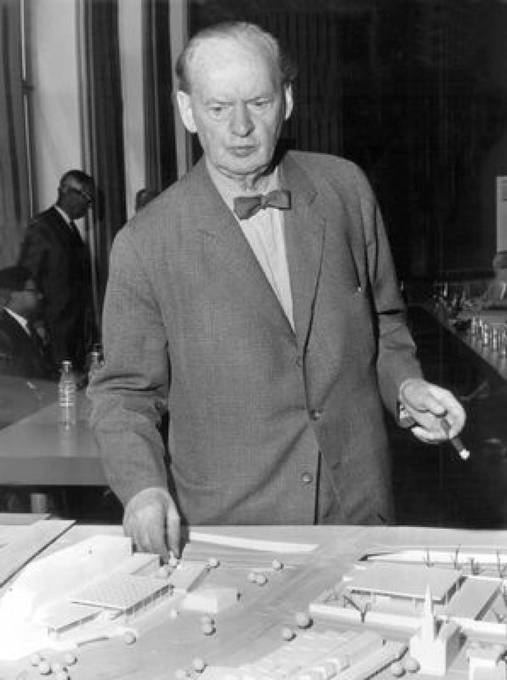 | ||
Academic employer | ||
Hans scharoun architecture
Bernhard Hans Henry Scharoun (20 September 1893 – 25 November 1972) was a German architect best known for designing the Berlin Philharmonic concert hall and the Schminke House in Löbau, Saxony. He was an important exponent of organic and expressionist architecture.
Contents
- Hans scharoun architecture
- Hans scharoun berliner philharmonie berlin
- 1893 to 1924
- 1925 to 1932
- 1933 to 1945
- 1946 to 1972
- After 1972
- Awards and prizes
- Buildings selected
- Projects selected
- Writings
- References
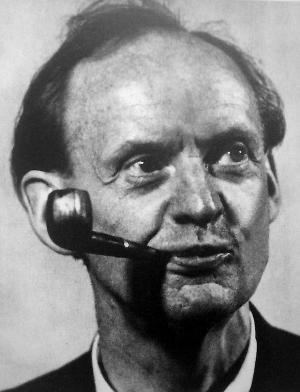
Hans scharoun berliner philharmonie berlin
1893 to 1924
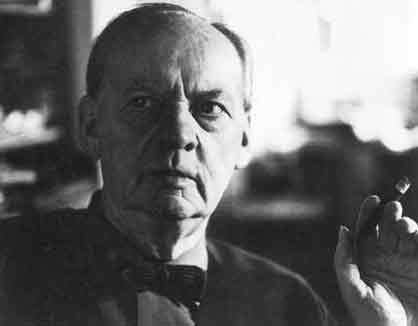
Scharoun was born in Bremen. After passing his Abitur in Bremerhaven in 1912, Scharoun studied architecture at the Technical University of Berlin until 1914 (at the time called Königliche Technische Hochschule, the Royal Technical University of Berlin), but he did not complete his studies. He had already shown an interest in architecture during his school years. At the age of 16 he drafted his first designs, and at 18 he entered for the first time an architectural competition for the modernisation of a church in Bremerhaven.
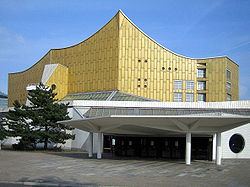
In 1914 he volunteered to serve in the First World War. Paul Kruchen, his mentor from his time in Berlin, had asked him to assist in a reconstruction program for East Prussia. In 1919, after the war, Scharoun assumed responsibility for its office as a freelance architect in Breslau (Wrocław). There and in Insterburg (Chernyakhovsk), he realised numerous projects and organised art exhibitions, such as the first exhibition of the expressionist group of artists, Die Brücke, in East Prussia.
1925 to 1932
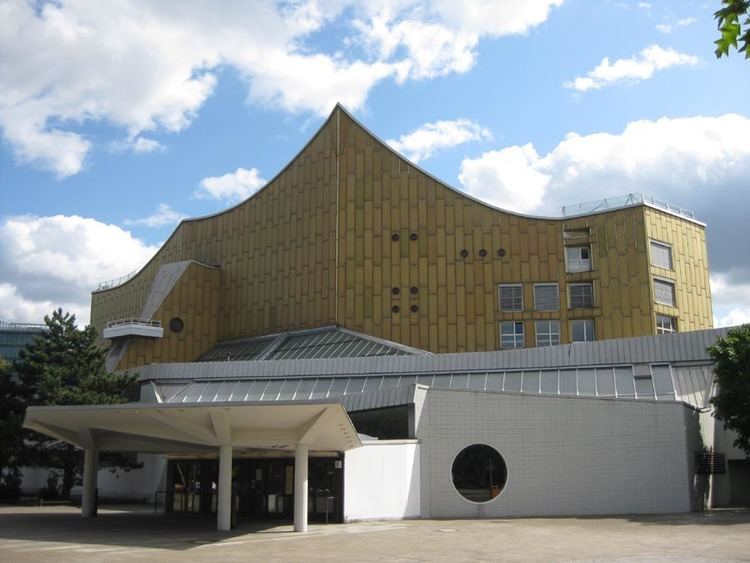
He received a professorship at the Staatliche Akademie für Kunst und Kunstgewerbe Breslau (Breslau Academy for Arts and Crafts) where he taught until its closure in 1932. In 1919 he had joined Bruno Taut's expressionist architects group the Glass Chain. In 1926 he entered the architects association Der Ring. In 1927 Scharoun built a house in the Stuttgart Weissenhof Estate. He had responsibility at the end of the twenties for the development plan of a large housing estate, Siemensstadt, in Berlin. Hugo Häring's theory of the new building inspired Scharoun in a new architectural direction that departed from rationalism and from preformulated schemata, in order to develop buildings starting in each case from a unique functional character. The organisation of social living space played a central role.
1933 to 1945

During the Nazi era he remained in Germany, whilst many of his friends and colleagues from the Glass Chain or Der Ring went abroad. In this time he only built a few family houses, one of which is the remarkable Schminke house (publicly accessible) in the city of Löbau in Saxony (1933). Subsequent houses had to adapt outwardly to politically determined construction specifications, while on the inside they displayed the typically Scharounian sequences of spaces. During the war he was busy with reconstruction after bomb damage. He recorded his architectural ideas and visions secretly in numerous watercolors. With these imaginary architectures he prepared mentally for a time after the Nazis.
1946 to 1972
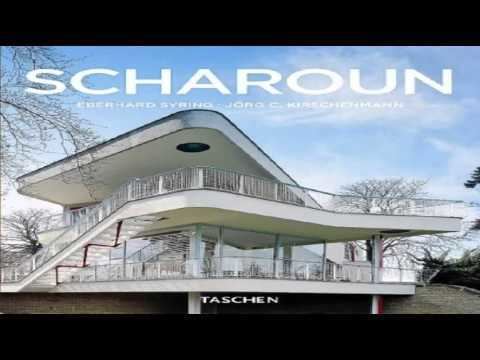
After the end of the Second World War he was appointed by the Allies to the city building council and named director of the Abteilung Bau- und Wohnungswesen des Magistrats (Department of Building and Municipal Housing). In an exhibition in the destroyed ruins of the Berliner Stadtschloss (Berlin City Palace) titled Berlin plant — Erster Bericht (Berlin Plans - First Report), he presented his conceptions for the reconstruction of Berlin. Immediately he found himself in a political no-man's land as the division of the city was becoming apparent.

In 1946 he became a professor at the faculty for architecture at the Technical University of Berlin, with a teaching post at the Lehrstuhl und Institut für Städtebau (Institute for Urban Building).
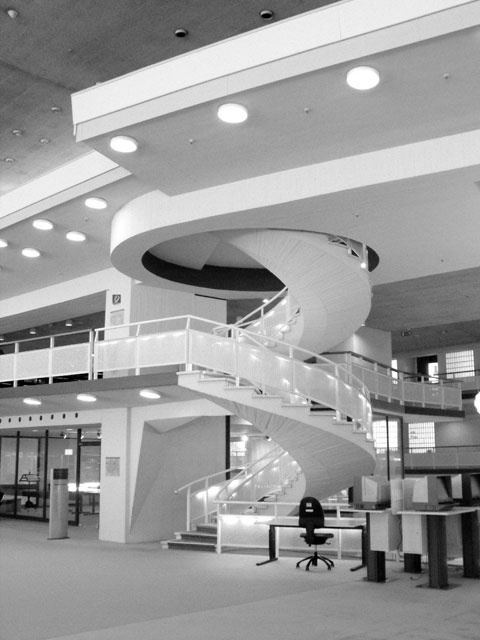
After the war he was able to realise his architectural understanding, both ambitious and humanistic, in exemplary buildings; e.g., in the Stuttgart apartment towers of Romeo and Julia (1954–59), in the Geschwister-Scholl-Gymnasium in Lünen (1956–62) and in the famed Philharmonic concert hall in Berlin (1956–63).
Common to all these buildings is a new kind of entrance to an extremely imaginative and socially differentiated organization of space. The school is planned like a small, child-friendly city, and the apartment towers allow for flexible allocation of space and function. The Philharmonic Concert Hall, internationally recognised as one of the most successful buildings of its kind, is considered as Scharoun's best work. Around the center of the music podium the ranks of spectators rise in irregularly placed terraces, and the ceiling planes layer themselves like a tent-like firmament over the architectural landscape.
The German Embassy in Brasília (1963–69) remains the only building that he built outside of Germany.
After 1972
Some of his most important buildings were only finished after his 1972 death in Berlin, including the Deutsches Schiffahrtsmuseum (German Maritime Museum), the theatre in Wolfsburg and the Staatsbibliothek (State Library) in Berlin. The extension to the Berlin Philharmonic Concert Hall around the Kammermusiksaal and the Staatliche Institut für Musikforschung Preußischer Kulturbesitz mit Musikinstrumentemuseum (Institute for Music Research and Musical Instrument Museum, Prussian Cultural Heritage Foundation) developed under the supervision of his office partner Edgar Wisniewski, who took over the office after Scharoun's death. During the 1980s, the facade of the Philharmonic Concert Halls was provided with a cladding of gold-anodized aluminum plates; originally it was a white and ocher painted concrete facade.
Scharoun's original designs had planned a similar cladding, which was not implemented at the time for cost reasons. After the reunification of Berlin Potsdamer Platz, adjacent to the east of the Kulturforum, was rebuilt; by this Scharoun's designs concerning city redevelopment of the area could finally be recorded as complete.
Awards and prizes
From 1955 to 1968 he was the president of the Berliner Akademie der Künste (West); in 1968 he was honorary president. He died, aged 79, in West Berlin.
Hans Scharoun was a founding member of the Paul Hindemith society in Berlin.
